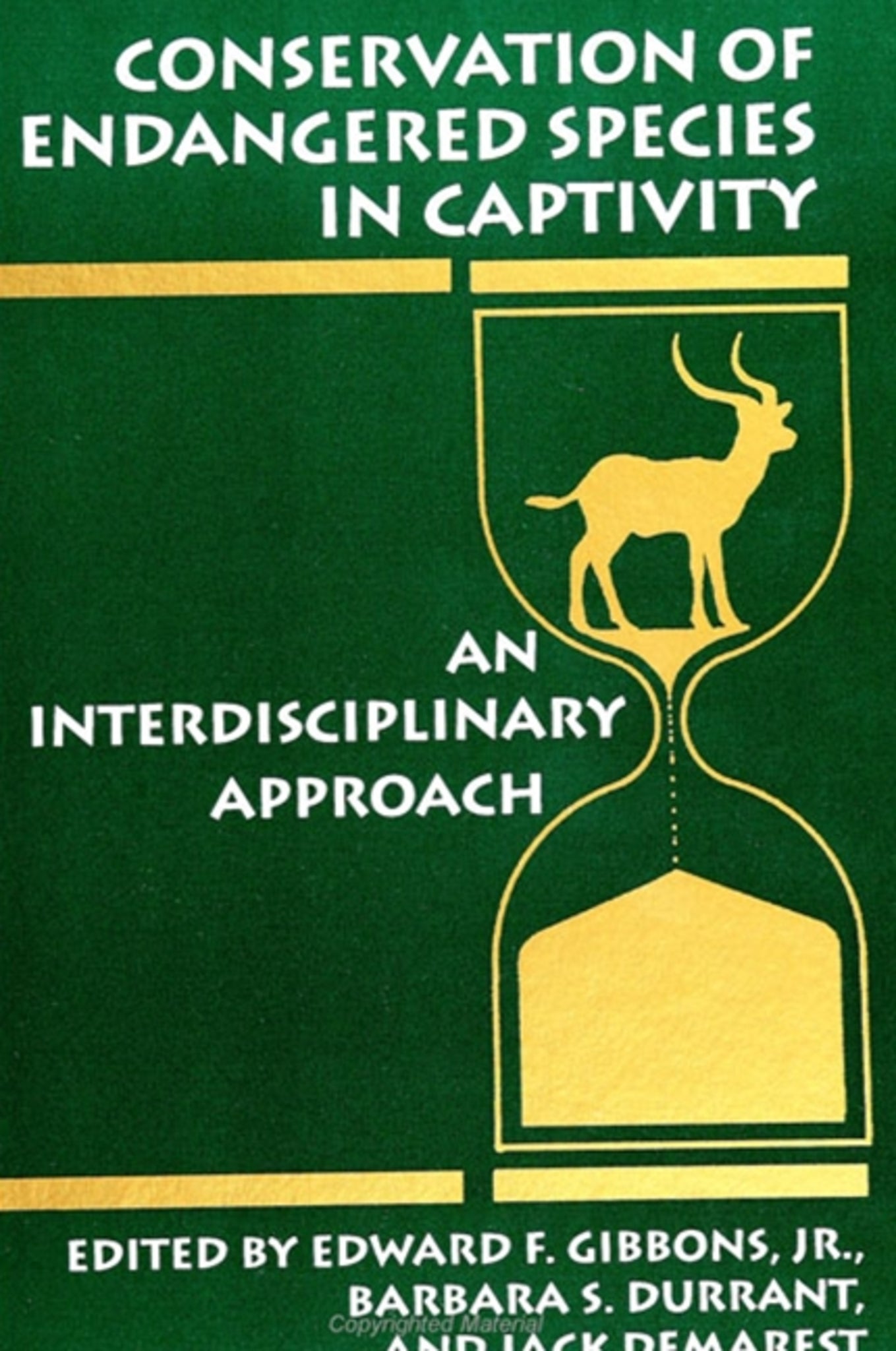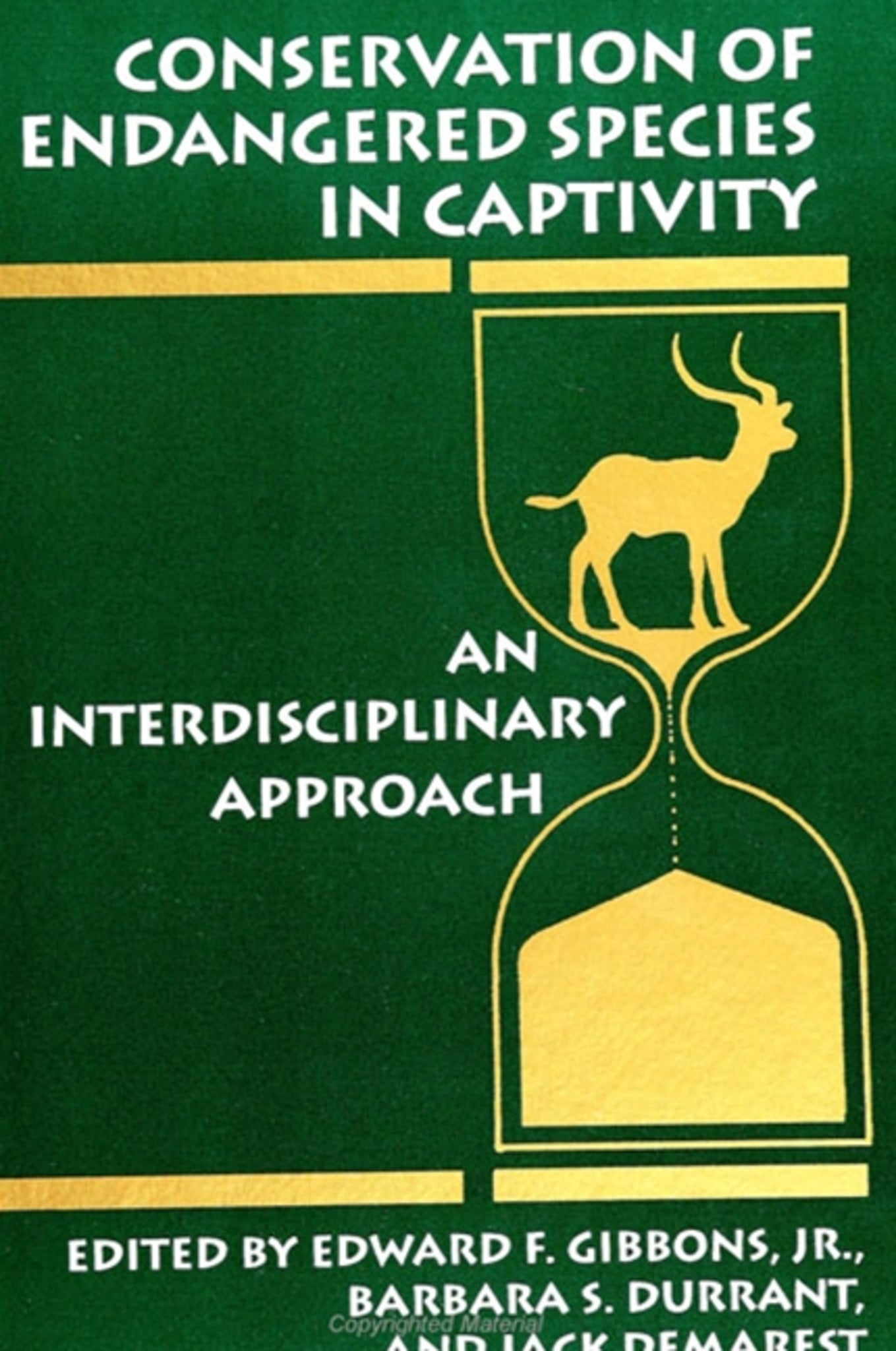We're sorry. An error has occurred
Please cancel or retry.
Conservation of Endangered Species in Captivity

Some error occured while loading the Quick View. Please close the Quick View and try reloading the page.
Couldn't load pickup availability
- Format:
-
14 September 1995

This multi-disciplinary approach to conservation of endangered species in captivity is organized taxonomically and by scientific discipline. The seven taxonomic groups included are invertebrates; fish, reptiles and amphibians, birds, marine mammals, primates, and other mammals. Within each taxonomic group, four scientific disciplines are explored: conservation, reproductive physiology, behavior, and captive design.
Conservation chapters summarize the status of the taxonomic group both in the wild and in captivity. Reviewed in the reproductive physiology chapters are anatomy, endocrinology and physiology for females and males of the taxonomic group. In the section on behavior the functions of captive animal research, the methods used, and the problems encountered are discussed. And, in examining captive design the authors provide a general historical outline of the philosophies, trends, and scientific issues for the targeted taxonomic group.


"The editors and authors have brought together under one cover the essential elements and understanding necessary to create a meaningful conservation program to address the needs of a diverse group of endangered species." — Wilbur B. Amand, V.M.D., Zoological Society of Philadelphia
"It fills a void in the literature and is a book that I would likely adopt for one of my classes. Several of the chapters represent the only materials available on specific topics. Although there are other books with similar sounding titles, this is the only one with the scope to essentially cover the field indicated in the title." — Hal Markowitz, San Francisco State University
Acknowledgments
Introduction
Volume Editors
I. Invertebrates
Introduction of Authors and Chapter Previews
1. The Conservation of Invertebrates: Problems and Prospects
Michael H. Robinson
2. Complex Life Histories and Diverse Reproductive Physiologies of Endangered Invertebrates: Implications for Captive Conservation
Boyce A. Drummond
3. Behavioral Research with Endangered Invertebrate Species
Jack Demarest and Marcia Bradley
4. Design of Captive Environments for Endangered Invertebrates
Leslie S. Saul-Gershenz, Richard A. Arnold, and J. Mark Scriber
II. Fishes
Introduction of Authors and Chapter Previews
5. Captive Conservation of Endangered Fishes
Christopher C. Kohler
6. Reproductive Physiology of Teleost Fishes
Leo S. Demski
7. Behavioral Research on Captive Endangered Fishes of North America
Ruth Francis-Floyd and James D. Williams
8. Design of Captive Environments for Endangered Fishes
Michael K. Stoskopf
III. Reptiles and Amphibians
Introduction of Authors and Chapter Previews
9. Conservation of Reptiles and Amphibians
Peter C. H. Pritchard
10. Reproductive Physiology of Reptiles and Amphibians
Paul Licht
11. Ethological Studies on Reptiles and Amphibians: Lessons for Species Survival Plans
Gordon M. Burghardt and Mark A. Milostan
12. Captive Design for Reptiles and Amphibians
Janice J. Perry-Richardson and Craig S. Ivanyi
IV. Birds
Introduction of Authors and Chapter Previews
13. Captive Propagation and Avian Conservation
Christine Sheppard
14. Avian Reproductive Physiology
George F. Gee
15. Behavioral Considerations in the Captive Management, Propogation, and Reintroduction of Endangered Birds
Michael Hutchins, Christine Sheppard, Anna Marie Lyles, and Gerard Casadei
16. Captive Design for Endangered Birds
Bruce W. Bohmke
V. Mammals (Excluding Marine Mammals and Primates)
Introduction of Authors and Chapter Previews
17. The Status and Challenges of the Conservation of Mammals in Captivity
Reginald A. Hoyt
18. Reproduction in Mammals: Captive Perspectives
Barbara S. Durrant
19. Mammalian Behavior: Lessons from Captive Studies
John L. Gittleman and Greta C. McMillan
20. Interdisciplinary Issues in the Design of Mammal Exhibits
Debra L. Forthman, Rita McManamon, Uriel A. Levi, and Gail Y.Bruner
VI. Marine Mammals
Introduction of Authors and Chapter Previews
21. The Tides of Change: Conservation of Marine Mammals
Sam H. Ridgway
22. Marine Mammal Reproductive Physiology
J. Pete Schroeder
23. Marine Mammal Behavior: Conservation Through Research
Susie Ellis
24.Elements of Successful Facility Design: Marine Mammals
Jay Sweeney and Terry Samansky
VII. Primates
Introduction of Authors and Chapter Previews
25. Conservation of Primates in Captivity
Edward F. Gibbons, Jr.
26. Comparative Reproductive Physiology of Female and Male Nonhuman Primates
S.D. Kholkute and W. Richard Dukelow
27. Primates and Behavior
Douglas K. Candland and Sarah L. Bush
28. Ark Design Update: Primate Needs and Requirements
Donald G. Lindburg and Jon Coe
Conclusion
References
Contributors
Index



